Automotive trends can change at the drop of a hat, and sometimes it can be hard to keep track of these things. Motorsport is no different. In years past, a driver would strap themselves into their machine and do battle until the day arrived where the next “latest-and-greatest” piece of machinery would appear over the horizon. Suddenly, a competitive race car was rendered obsolete, and its ultimate fate would depend on prevailing circumstances. This was how so many great and historically significant cars have disappeared forever. However, we now see a greater emphasis on the preservation of these machines, and significant cars can command some pretty extraordinary prices. That’s where this humble Ford Falcon fits into the equation. It was built by a small team of people in an owner/driver scenario. It scored a significant pole position on its debut in 1996 in Australia’s greatest race and was piloted by its driver and team owner to an Australian championship the following year. This rates as one of the country’s most significant motorsport achievements, and it will almost certainly never be repeated. This 1996 Ford Falcon V8 Supercar has been listed for sale here at Lloyds Auctioneers and Valuers. The bidding currently sits at A$79,000, but the expectations are high on this car. There is a realistic expectation that by the time the hammer falls, this could be Australia’s next million-dollar race car.
To understand where this Falcon fits into the scheme of things, it is probably best to start by looking at a brief history of Australian motorsport. For many years the Australian scene mimicked the European philosophy. This meant that the premier categories were predominantly open-wheel, while saloon or sedan racing (touring cars) was seen as a poor cousin. However, the growth in popularity and importance of events like the annual Bathurst 1000 saw the balance swing, and touring cars rapidly assumed the mantle formerly occupied by categories like Formula 5000. This was fine through the 1970s and into the early 1980s, but Australia’s “orphan” touring car category, Group C, had become a minefield of problems. The governing body was keen to have fast and close racing, but balancing the formula to achieve equality across vehicles as diverse as the V8 Ford and Holden, along with the rotary Mazda RX7, the BMW 635, and the Nissan Bluebird Turbo was becoming a nightmare. From 1985, the country swung its weight behind International Group A, and there was peace and harmony for a while. However, with the advent of the Ford Sierra RS500 and the Nissan GTR, it all became too expensive and irrelevant, and the top echelon was in real danger of dying. The solution was to devise a new set of racing rules that was uniquely Australian, and was above all else, affordable for competitors. The formula was simple; The cars would be based on production Ford Falcon and Holden Commodore bodyshells. They would feature V8 engines with some sensible performance limitations. Big wings and spoilers would provide an aggressive appearance and usable downforce, and all cars would run to the same minimum weight. The category was born in 1992, and the first real competition began in the 1993 season. What the category organizers found themselves with was an unqualified success. The cars looked good, they sounded amazing, and the racing was action-packed and entertaining. There were still a few rumblings behind the scenes due to some disjointed rule changes and decisions, so the category participants effectively took control of the rules and regulations to form what became known, from 1997, as V8 Supercars. It was pretty typical that the well-moneyed teams would be expected to taste the lion’s share of success, but the affordability meant that even competitors with smaller budgets had the potential to achieve success. During the early days of the formula, the major sponsorship dollars for the teams were usually derived from oil company sponsors like Shell and Castrol, or tobacco advertising. However, when the latter was outlawed at the end of 1995, several teams found themselves in a great deal of financial trouble. Probably none more so than Glenn Seton Racing. There was political drama within the team in the latter part of 1995, and Team Owner and #1 driver Glenn Seton experienced the heartbreak of engine failure while leading the 1995 Bathurst 1000 only nine laps from home. For the 1996 season, Glenn Seton Racing, or GSR, was reduced to a single-car entry, and the team’s workforce was stripped down to a crew of six people. They soldiered on through the year with the 1995 car, but come Bathurst 1996, they debuted the chassis designated GSR7. That is this car, and not only did qualify on pole for its debut at Bathurst, but he piloted it to great success during 1997. The vehicle actually rolled down the production line as a Falcon EF bodyshell, but as so often happened in the category, it was updated to the later EL model panelwork before it hit the track. The car has had a long history since its days at GSR, but it has been carefully restored by its current owners and by Seton himself, and it presents exactly as it did during the 1997 racing season. It is finished in its basic white color scheme, featuring the red and blue slashes, and the sponsorship decals from Ford Credit. Make no mistake, this bodyshell is essentially the same as your average buyer received when they bought their car off the showroom floor. The only changes made during the production process were to omit all sound deadening and joint sealing material and to leave off unnecessary brackets for items like the e-brake. Some allowable changes were made to the front and rear wheel wells to accommodate the wider racing wheels and tires, but it is the spoilers and wings that will grab your attention. These were homologated parts, with all Fords running identical aerodynamics, while the same was true for the Holden competitors. They aren’t merely about looks, because they do provide a measurable amount of downforce. All of these pieces are original items, and as is the case with every aspect of this classic, the condition is as-new.
The big step forward for V8 Supercars over its predecessors was that there were some controls placed over engine specifications. It didn’t matter which brand you favored, the engine bay was to be occupied by a fuel-injected 5.0-liter V8. While some Holden teams initially used the company’s own motor, many plumped for a Chevrolet unit. For Ford teams, there was no choice. The engine started life as one of Ford’s SVO V8s, but with a few modifications. The basic recipe was simple. The engine had an electronic rev limit set at 7,500rpm, and the compression ratio was pegged at 10.5:1. Initially, these engines were good for around 480hp, but it didn’t take long for the horsepower war to escalate. There were no weight limits on components like pistons or conrods, so engine builders had a ball in that area. The dimensions of the cylinder head ports and camshaft specifications were also free, and it didn’t take long for the power to nudge 600hp. However, it is that enormous composite shroud that hides the true “black art” of the V8 Supercar.
I’m sure that some of you feel slightly underwhelmed by what we find under that composite cover, but what you are looking at is probably one of the best-kept secrets for any V8 Supercar team. While there were strict controls placed on compression ratios and rev limits, there were no such constraints on exhausts or intake systems. Virtually every major team followed its own design philosophy when it came to the intake, the injector placement, the injector trumpets, and the cold-air intake system. These were closely guarded secrets because the design, engineering, and production of these components were not cheap. The difference between a reasonable system and one that was top-notch could mean the difference between an engine that produced 550hp, and one that jumped beyond 600hp. Under most circumstances that meant little, but as you approached the end of Conrod Straight at Bathurst, it meant an appreciable difference in top speed. By the time this engine was slotted into GSR7, speeds had risen from around 280kph (174mph) in the early days of the category, to a staggering 300kph (186mph). That made a huge difference if you were trying to overtake, or could make you a sitting duck if the more powerful car was on your tail as you hit the straight. Of course, all of that power had to go somewhere, and this is where we move back into a tightly controlled area of the category. All cars were to be fitted with an Australian-developed Holinger 6-speed racing transmission, which fed the power to a Ford 9″ rear end. “Sorry Holden competitors, but you need to add this Ford product to your vehicle.” Stopping power is provided by enormous 4-wheel disc brakes, while the specifications of springs and shock were free. GSR7 is fitted with all of these components, and once again, they are in as-new condition. Everything has been restored to its correct state, and if the buyer wants to hit the track for a bit of fun, the Falcon is ready to deliver.
For our American readers, there is one specific area of the history of V8 Supercars which draws a very neat parallel with NASCAR. Both categories were initially based on production bodyshells, but as they developed and evolved, both have come to utilize a common chassis and roll-cage design, with manufacturer-specific body panels draped over them. When GSR7 was built, there were no constraints on these designs, and compared to a modern Supercar, the interior of this Falcon looks positively spartan. The bar-work that is present would have provided adequate protection when the car was new, but it is a long way short of where cage design rests today. The cage was designed to not only provide protection for the occupant but to add torsional rigidity to the vehicle. That brings us to an interesting sidebar in the history of the category. When it was devised, the regulations set a minimum weight limit of 1,300kgs (2,866lbs). If a builder could get the car below that weight, it allowed scope for the placement of lead ballast to improve weight distribution. In theory, this was a great idea that came with one flaw. It soon became apparent that the bare Falcon bodyshell was inherently heavier than the Commodores. That meant that no manner of clever engineering allowed a Falcon to hit the minimum weight. As for ballast, that wasn’t an option. Ford was heavily committed to the category, and they offered a solution to its teams. They ran a series of special “Ford Motorsport” shells down the production line. They didn’t make a lot of noise about these shells, but Ford teams were made aware of their existence. What made these special is that they were made from thinner steel to reduce weight. The question of driver safety or vehicle flexing was never a consideration because that was what the roll-cage was designed to address. With these new bodies, Ford teams found themselves able to get their cars below the limit, and parity was theoretically achieved. There was only one glaring flaw in this otherwise brilliant scheme. The category was based on vehicles built on production bodyshells, and the Ford Motorsport ones were not even close to meeting that description. The scheme was uncovered, and there were many red faces within the category. While the Falcons were now illegal, it wasn’t deemed appropriate to outlaw the existing cars. The category demanded that no further cars be built in this way, and they lifted the minimum weight for both the Commodore and Falcon to 1,350kgs (2,976lbs) to ensure that both manufacturers could utilize ballast in the future.
The interior o GSR7 has a sense of purpose, and there is little in the way of comfort or luxury for the occupant. The car normally wouldn’t be fitted with a passenger seat, but owners sometimes fitted these for ride days. That was the time when some lucky individual found themselves strapped in beside a driver to experience just how fast and brutal these cars could be. The regulations at the time required the dash fascia and cap to remain intact, although the gauge cluster would always be changed. The owner could choose whether to retain the production door trims or to replace them with the material of their own choosing. Most teams decided to plump for carbon composite items because this knocked a few grams off the vehicle’s weight. What you will find in this Falcon is a body-hugging race seat, a six-point racing harness, and a thick Momo racing wheel. The dash features a couple of analog gauges, but most of the vehicle’s vital signs are monitored by the Autronic engine management system and the PI Systems data logger and LCD digital dash. That LCD display features numerous “pages” that the driver could scroll through with the push of a wheel-mounted button. It could monitor all of the vehicle’s temperatures and pressures, provide a digital readout of road speed, as well as a bar-graph tachometer and shift lights. The driver also has a light and precise shifter for the Holinger transmission, levers to control the front and rear anti-roll bars, and a large red knob close to their right hand to adjust the brake bias. All of these items are, once again, in as-new condition. The owner is also including a few useful spares to help keep the show on the road.
This Ford Falcon V8 Supercar, otherwise known as GSR7, holds a special place in Australian motorsport history. I’ve kept you in suspense on that, but now is the time to share it with you. When tobacco sponsorship was banned in Australia, Glenn Seton Racing had to massively downsize its operation to survive. By the time this car made its debut, GSR was a single-car operation with a mere six staff (including Seton himself). The history of the category is littered with some of the greatest names in motorsport history, including Walkinshaw, Andretti, and Penske. All have sunk huge amounts of money into the category, and all have reaped the rewards. When Glenn Seton wheeled this Falcon out at the start of the 1997 racing season, he was a minnow. He had tasted significant success in the past, but his underfunded little team was up against some extraordinary opposition. By the time the season wound its way to its conclusion, it had become one of triumph. Glenn Seton was crowned the new V8 Supercar Champion. It was the last time that a single-car team operated by an owner/driver tasted that success, and with the way the sport has evolved, it’s safe to say that it will never happen again. That’s what makes this giant killer so incredibly special, and it is why I am so glad that someone decided to preserve it. That is also why this humble Falcon has the potential to become Australia’s next million-dollar race car.
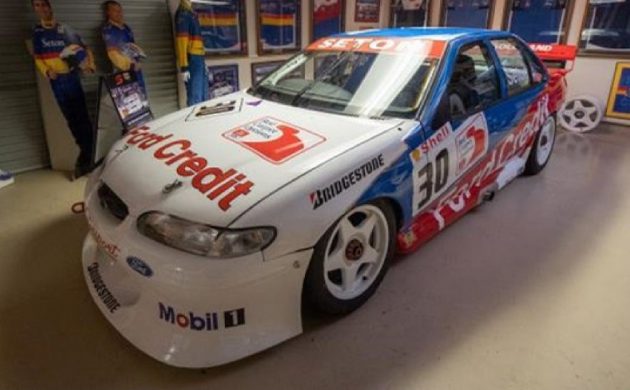

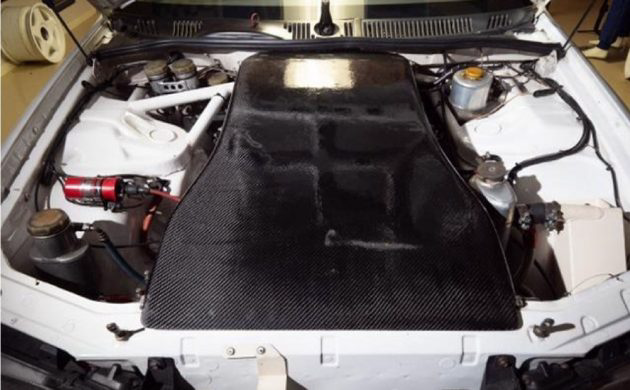
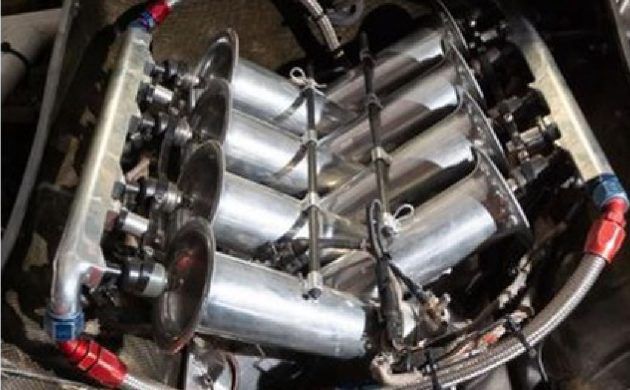
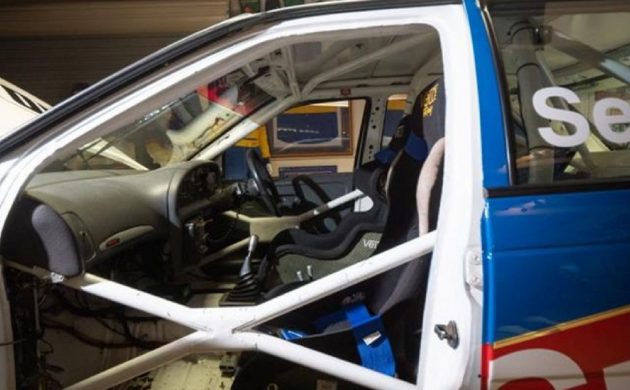
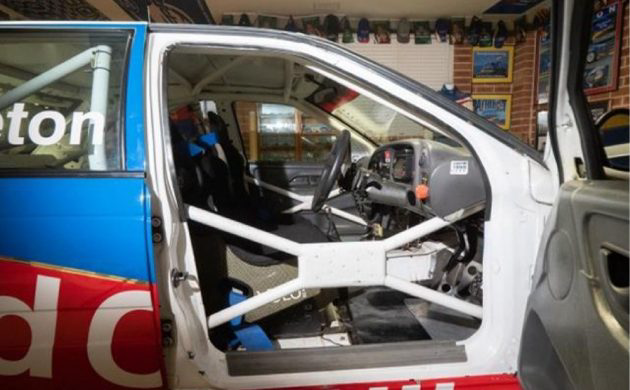



Thank you Adam, once again, for an excellent write up on the history of a car and the racing around it.
Brilliant and very educational.
Seton was a class act,and a clean racer (I’m looking at you, Marcos Ambrose) And the description omits the body mods for a four link & Watt’s linkage rear axle. The current Stupidcars format is a joke, we need to return to a production car shell. Rant ends.
Honestly though, that’s pretty consistent with almost all forms of racing now. In the US, NASCAR hasn’t been production based since at least the early 80’s. And Touring car is no different; very few are based on actual production cars any more.
Drag racing, much of the same. Look at the No Prep series, they’re fiberglass or CF shells covering a tube frame. Even the Fastest Street car shoot out is all ProMod any more.
Problem is, look around at production cars. BMW says their competition is Toyota. They don’t want to build drivers/performance cars, they want to sell German Camry’s.
The older Aust.touring car races were great to watch.This car should sell well to someone from Aust.Maybe put it in some museum.
Awesome write up. Would like to see more cars like this.
Great writeup Adam! It was indeed a massive achievement for GSR and as you say the sport has evolved and we wont see this David and Goliath battle again. However, I’m not so sure that this Ford will meet the dizzying prices that Holdens have been commanding?!
Thank you for the brilliant write up. I was disappointed with the comments of the previous Million dollar Holden. Hopefully people will see how serious Australian Touring Car racing was and understand how fiercely loyal fans are to their Marque. NASCAR is exciting, but not the only form of Motorsport.